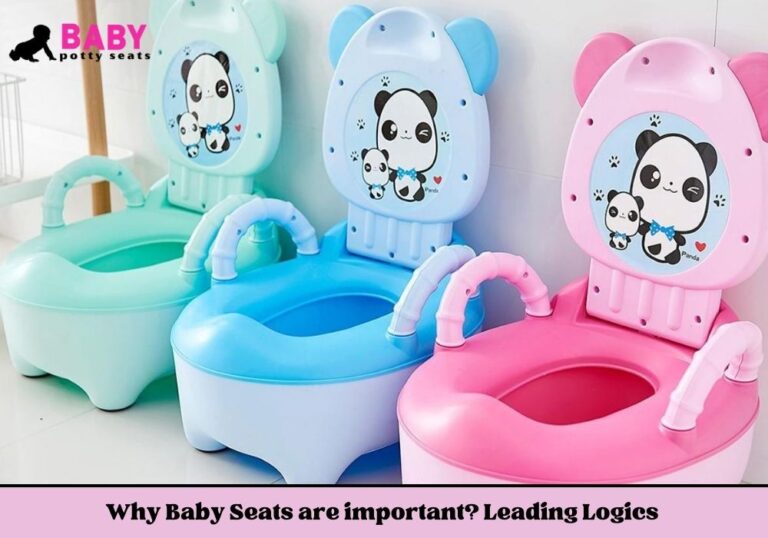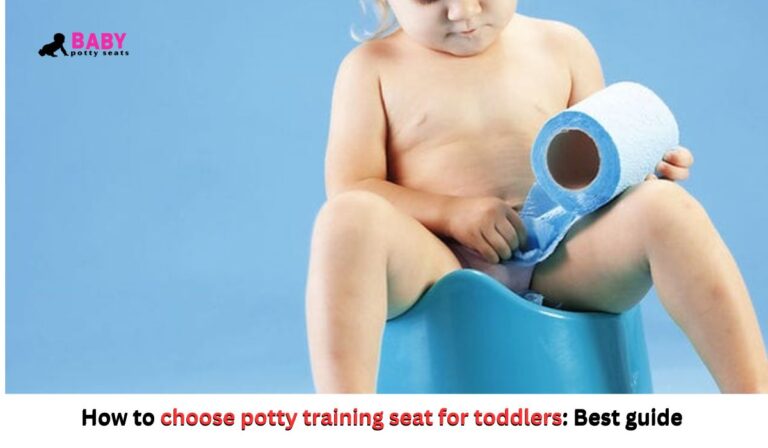While learning to use the toilet is an important developmental milestone for all kids, children with autism may find it particularly difficult.
How to teach an autistic child potty training? For both the child and the parents, this process can go more smoothly if the specific obstacles are recognized and customized strategies are put in place.
This post attempts to offer a thorough how-to manual for potty training an autistic child, complete with helpful hints and sympathetic counsel.
Understanding Autism and Potty Training
What is Autism?
Autism Spectrum Disorder (ASD) is a developmental condition that affects communication, behavior, and social interactions.
It can be difficult for kids with autism to comprehend and react to the world around them, which makes learning new skills like potty training more difficult.
Why Potty Training Can Be Difficult for Autistic Children?
Children with autism frequently exhibit distinct sensory sensitivity, difficulty communicating, and a preference for routine.
These elements may contribute to the complexity of the potty training process. For example, they may find it difficult to express their need to use the restroom or uncomfortable with the sensation of going to the bathroom.
The best 12 ways to potty train an autistic child
Below are the best 12 ways of potty training tips for autistic children, which help you a lot in the potty training journey.
Preparing for Potty Training
Assessing Readiness
Determine if your child is ready to start potty training before you begin. Keep an eye out for clues like prolonged dryness, interest in the restroom, or discomfort with unclean diapers.
Gathering Necessary Supplies
Assemble the necessary equipment to facilitate the process. A kid-sized potty, training pants, charts, and lots of patience are a few examples of these.
Creating a Potty Training Plan
Setting Realistic Goals
Make attainable goals that correspond with your child’s speed. Every child’s journey towards potty training is different, and it doesn’t happen overnight. Appreciate your little progress along the way.
Establishing a Routine
Children with autism thrive on routine. Set up a regular potty routine for your child, such as going to the bathroom after meals or every few hours. A sense of predictability and security is aided by consistency.
Using Visual Supports
Picture Schedules
Visual aids have a lot of potential for success. Make a visual schedule with all the steps involved in using the potty. What to expect can be better explained to your child with this visual guide.
Social Stories
Social stories are succinct summaries of a specific activity that outline expectations and appropriate behavior. They can ease your child’s anxiety and assist in helping them comprehend the idea of using the restroom.
Implementing Sensory Strategies
Understanding Sensory Needs
Children with autism may be more or less sensitive to sensory information. Observe how they respond to various elements of potty training, like the sensation of toilet paper or the sound of a flush.
Creating a Comfortable Environment
Construct a sensory-friendly bathroom. Consider using potty chairs or toilet seats that are sensory-friendly, maintain quiet in the space, and use soft lighting.
Communication Techniques
Using Simple Language
Keep instructions clear and straightforward. Use short phrases like “sit on the potty” or “time to go potty.” Repetition and simplicity are key.
Incorporating Sign Language
Using picture communication systems or sign language with non-verbal children or those with limited speech can be helpful. Basic indicators such as “potty” or “bathroom” can help with communication.
Positive Reinforcement and Rewards
Identifying Effective Rewards
Using picture communication systems or sign language with non-verbal children or those with limited speech can be helpful. Basic indicators such as “potty” or “bathroom” can help with communication.
Consistent Praise
Consistently give your child praise for any accomplishment or effort, no matter how tiny. Positive reinforcement boosts their confidence and motivates them to keep trying.
Dealing with Setbacks
Recognizing Common Setbacks
Potty training is a common process that often involves setbacks, particularly for kids with autism. Sometimes they may regress or oppose the process. Remaining patient can be aided by realizing that failures are frequent.
Strategies for Overcoming Setbacks
When obstacles arise, try to identify what’s going on. Is there a sensory problem, a communication breakdown, or a shift in schedule? If so, modify your strategy and stick to it.
Collaboration with Therapists and Educators
Involving Occupational Therapists
Occupational therapists can offer insightful advice and strategies catered to the unique requirements of your child. They can support potty training-related motor skills and sensory strategies.
Working with Teachers and Caregivers
Make sure that everyone who is caring for your child agrees. Maintaining consistency in various settings, such as home, school, and therapy, helps to strengthen the potty training process.
Maintaining Patience and Consistency
The Importance of Patience
It’s important to be patient. It can take some time to potty train a child with autism, so it’s critical to maintain your composure and encouragement throughout.
Staying Consistent with the Routine
It takes consistency to form habits. To reinforce the behavior, adhere as closely as possible to your potty training schedule and routines.
Adapting Techniques for Individual Needs
Customizing Approaches
Since each child is different, tailor your potty training methods to meet their specific requirements and preferences. Remain adaptable and open to trying alternative strategies.
Monitoring Progress
Keep track of your child’s progress. Celebrate successes and adjust strategies as needed based on what is working and what isn’t.
Troubleshooting Common Issues
Addressing Fear and Anxiety
Anxiety and fear can be major obstacles. Create a peaceful, encouraging atmosphere to help deal with these feelings, and use resources like social stories to help explain the procedure.
Managing Accidents
Mishaps are a necessary component of learning. Treat them with composure and without retribution. Remind your child to try again and give them credit for trying.
Long-Term Success Strategies
Gradual Independence
Reduce assistance over time to gradually promote independence. As your child grows comfortable, gradually allow them to assume greater control while still providing more guidance.
Reinforcing Skills Over Time
Even when potty training initially succeeds, keep practicing the skills. Long-term maintenance of these abilities can be facilitated by consistent reminders and encouraging feedback.
Related Article: 6 Best Potty Training Seat For Autistic Child | Blessing
Conclusion
An autistic child needs to be potty trained with patience, consistency, and a customized method. Your child can reach this significant milestone with your assistance if you are aware of their particular needs and employ a range of strategies. Recall to remain tenacious despite obstacles and to rejoice in each tiny accomplishment.
Frequently Asked Questions(FAQs)
How long does potty training usually take for autistic children?
The duration varies widely. Some children may take a few months, while others might take longer. It’s essential to be patient and consistent throughout the process.
Can I use the same methods for an autistic child as a neurotypical child?
Children with autism frequently need extra support, such as visual aids, sensory strategies, and more patience, even though some of the techniques may overlap. It’s critical to adjust the strategy to meet their unique requirements.
What is the best way to potty train an autistic child?
The best way to potty train an autistic child is to use a consistent routine and visual supports, and to be patient and positive, celebrating small successes along the way. Tailor the approach to the child’s specific needs and sensory preferences.
Is it hard to potty train an autistic child?
Potty training an autistic child can be challenging due to sensory issues and communication difficulties. However, with patience, consistency, and tailored strategies, it is achievable.








